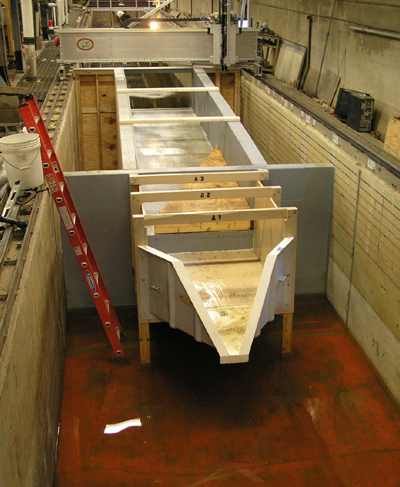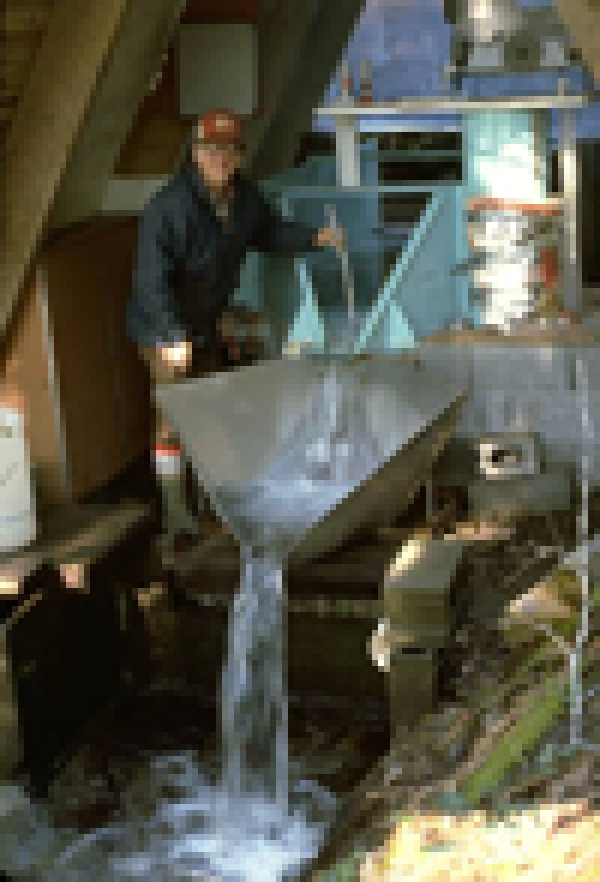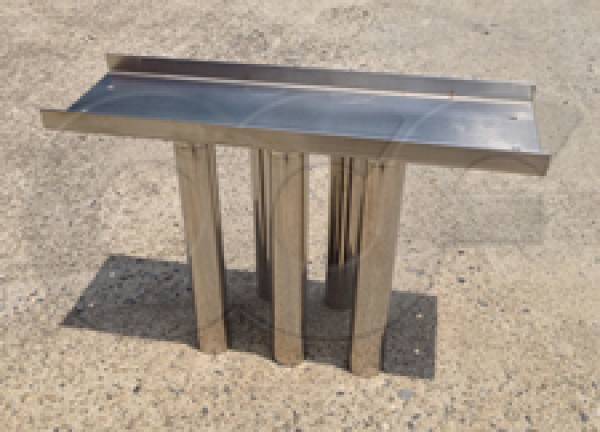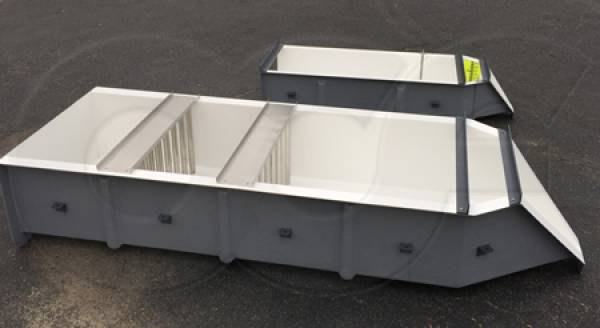This website uses a variety of cookies, which you consent to if you continue to use this site. You can read our Privacy Policy for
details about how these cookies are used, and to grant or withdraw your consent for certain types of cookies.
H Flume Approach Length and Flow Accuracy
H flumes are commonly used in catchment, runoff, and edge-of-field studies. For a variety of reasons it is not always feasible to provide a full-length approach section at the inlet of an H flume. When shortening the approach section of a H flume, there is always the concern of how the modification might impact measurement accuracy.
General Approach Section Lengths
Part of the confusion comes from the fact that the length of H flume approach sections is only generally defined. In Field Manual for Research in Agricultural Hydrology, Brakensiek, Osborn, and Rawls define the length of the approach as 2 to 5 D (D being either the maximum anticipated head, Hmax, or, by default, the depth of the flume). In Chute Entrances for HS, H, and HL Flumes, Gwinn investigated approach sections with lengths of 2.5D, 3.75D, and 5D long.
Gwinn did find that the ratings for the 2.5D long approach sections were not unique for rising and falling flows and that a 5D long approach section provided good results. However, there was no definitive information provided as to how much better the accuracy of the flume was with the longer length approach section than with a shorter one.
Looking at Gwinn’s observations critically, they make sense: the H flume is more weir than flume. H flumes are called flumes based on historical precedence rather than their adherence to the general definition of a flume. They require the same free-spilling discharge as a weir and lack the discharge section commonly found in flumes.
The design of the H flume combines the accuracy and sensitivity of a sharp-crested V-notch weir with the self-cleaning flat floor of some flumes. To measure flow in a weir installation, a proper weir pool must be formed upstream, with the resultant point of measurement located 3 to 4 times the maximum anticipated head, Hmax, upstream of the weir crest. This 3 to 5 times the depth corresponds nicely to the recommended length of an H flume’s approach.

Recent Research
In 2010 research was conducted by the University of Minnesota’s St. Anthony Falls Laboratory to determine, in part, how approach section length affects the accuracy of H flumes. This research was conducted on behalf of the University of Wisconsin-Platteville’s Pioneer Farm who extensively use H flumes throughout their facility.
Tests were conducted on a fiberglass 2-foot H flume with approaches of 2D, 3D, and 5D long (D = flume depth) and at discharges of 1, 5, and 11 CFS [28.32, 141.6, and 311.5 l/s], all with a wooden wedge in the channel directly ahead of the approach section to simulate poor approach condtions of the sort usually resulting from snow melt or upstream vegetation.
The results of the tests were as follows:
| Approach Section Length | Discharge (CFS) | Percent Error (%) |
| 2D | 1 | 12.4 |
| 2D | 5 | 3.0 |
| 2D | 11 | 5.4 |
| 3D | 1 | 1.1 |
| 3D | 5 | -1.5 |
| 3D | 11 | 0.8 |
| 5D | 1 | -2.6 |
| 5D | 5 | -1.9 |
| 5D | 11 | 0.8 |
A total of 9 tests were conducted with various approach section lengths with one test per approach section length - discharge combination. The flow of the 2D approach section was affected by a standing wave being created as a result of the poor upstream conditions. In the 3D and 5D length approach sections, the flow was conditioned and the resulting error associated with the poor approach conditions were minimized.
The conclusions from the research were:
- The testing suggests that the error and variability in the discharge reading at the H Flume was lower with a longer approach setion that served to "still" the flow
- An approach longer than 2 times the depth helped dissipate turbulent energy prior to entering the H Flume
- Discharge readings were better with a longer approach section
- Readings with shorter approach sections were still fairly accurate, but the longer approach sections providing better results
- Where it's challenging to incorporate a longer approach section, the trade-off between the approach section length and error is worth investigating
Sources: Field Manual for Research in Agricultural Hydrology, Agriculture Handbook No. 224, February, 1979, Chute Entrances for HS, H, and HL Flumes, Journal of Hydraulic Engineering, Vol. 110, No. 5, May, 1984, Marr, J., Johnson, S., and Busch, D., Performance Assessment of H Flumes Under Extreme Approach Flow Conditions, Project Report No. 538, St. Anthony Falls Laboratory, University of Minnesota, March, 2010, Pioneer Farm, School of Agriculture, University of Wisconsin-Plattville,
Related Blog Posts
Explore more insights in our blog.

LOCATIONS IN ATLANTA, GA & BOISE, ID





